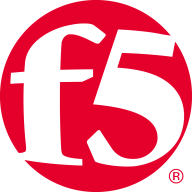
![Threat Stack Cloud Security Platform [EOL] Logo](https://images.peerspot.com/image/upload/c_scale,dpr_3.0,f_auto,q_100,w_64/o0no0it6ybl6satjcxomcblsgmd6.png)
Threat Stack Cloud Security Platform and NGINX App Protect compete in the cloud and application security market. NGINX App Protect tends to be seen as superior due to its robust features and perceived value.
Features: Threat Stack offers cloud-native security monitoring, real-time threat detection, and compliance management. NGINX App Protect provides advanced application security, layer 7 DDoS protection, and a robust policy engine.
Room for Improvement: Threat Stack could improve by enhancing its reporting features, expanding integration capabilities, and simplifying the tuning process. NGINX App Protect could benefit from an enhanced user interface, improved documentation, and more streamlined policy management.
Ease of Deployment and Customer Service: Threat Stack offers a simple cloud-based deployment focusing on integrating into existing environments with responsive support. NGINX App Protect provides flexible deployment options for both cloud and on-premises needs, with comprehensive documentation available.
Pricing and ROI: Threat Stack provides competitive pricing with a favorable return on investment through comprehensive cloud monitoring. NGINX App Protect may involve higher initial expenses, but it offers strong ROI by ensuring application security.
They were quick and efficient when we had issues.
It is a quality solution, and I would rate its stability as eight out of ten.
There was more information from F5 regarding hardware requirements and specifications to deploy the service.
The most valuable feature is the ability to operate in a DevOps environment and to be configured through API and pipeline by the developers themselves.
Detecting bots and blocking IPs have proven effective for securing applications.

| Company Size | Count |
|---|---|
| Small Business | 8 |
| Midsize Enterprise | 5 |
| Large Enterprise | 11 |
| Company Size | Count |
|---|---|
| Small Business | 2 |
| Midsize Enterprise | 5 |
| Large Enterprise | 2 |
NGINX App Protect application security solution combines the efficacy of advanced F5 web application firewall (WAF) technology with the agility and performance of NGINX Plus. The solution runs natively on NGINX Plus and addresses some of the most difficult challenges facing modern DevOps environments:
NGINX App Protect offers:
Threat Stack Cloud Security Platform [EOL] offers robust security features including endpoint monitoring, rule customization, and integration capabilities, with easy connectivity to cloud services like Docker and AWS.
Threat Stack Cloud Security Platform [EOL] provides tools for enhancing security visibility across cloud infrastructure. It supports AWS and Docker integration, facilitating efficient threat detection and management. Users appreciate its capability to configure customizable alerts and monitor endpoints, sessions, API interactions, and cloud services. However, there are areas needing improvement, such as better serverless environment support and reduced alert frequency. The platform services smaller organizations by compensating for limited security resources with its comprehensive monitoring and auditing tools.
What are the key features?In specific industries, Threat Stack Cloud Security Platform [EOL] is utilized for its strength in monitoring cloud infrastructure and preventing unauthorized access. Organizations in fields where cloud operations are critical use it for regular audits and monitoring. Its capabilities in threat management are leveraged to maintain secure operations and compliance, especially where there is no dedicated security team.
We monitor all Container Security reviews to prevent fraudulent reviews and keep review quality high. We do not post reviews by company employees or direct competitors. We validate each review for authenticity via cross-reference with LinkedIn, and personal follow-up with the reviewer when necessary.